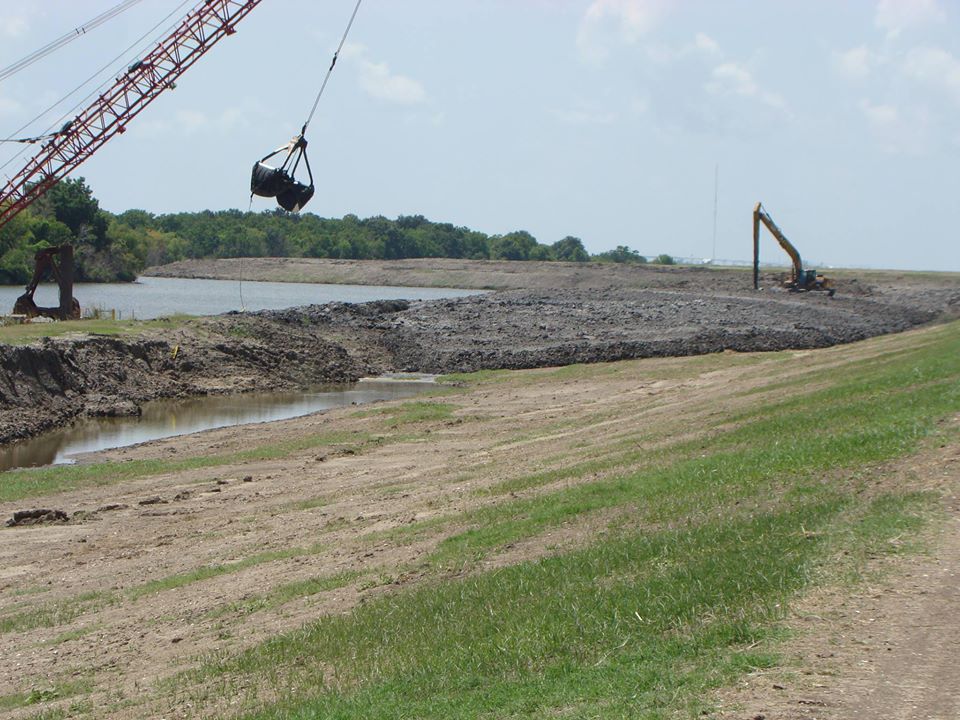
Oil prices slowly trudging upward
May 31, 2017
Continued legacy: Bollinger makes changes, but results still steady
May 31, 2017The Bayou Region’s most pressing existential crisis also presents a litany of opportunities for local workers and businesses.
As local, state and federal dollars pour in to help protect and restore Louisiana’s quickly disappearing coast, companies could be in line to pick up valuable work in those projects. Local coastal and business advocates say the burgeoning water management sector will provide a godsend of economic activity for a region reeling from the current oil and gas slowdown.
Louisiana is in line to collect hundreds of millions, and possibly billions, of federal dollars to be spent on coastal restoration projects. The RESTORE Act, which allocates penalty money related to the Deepwater Horizon oil spill to Gulf Coast states, promises $1.86 billion to be directly given to five Gulf states for restoration, meaning Louisiana is due $372 million, or one-fifth of the total, from that component alone. The act has also earmarked another $3.2 billion in projects related to restoration and spill impact spending. Terrebonne and Lafourche Parishes, some of the areas most affected by the oil spill, could be in line to receive projects from that additional largesse. The Gulf of Mexico Energy Security Act (GOMESA) ensures the federal government will share some of its revenues from offshore oil and gas leasing with four Gulf states, including Louisiana.
Simone Maloz, executive director of local coastal advocacy nonprofit Restore or Retreat, said the incoming federal dollars for projects is great news for those fighting for and living on Louisiana’s coast. While the projects being done at all is great news, there are also opportunities for the work to be done by local companies.
“With all of this coastal restoration and protection work coming online, there’s a potential there for another sector to be created,” Maloz said.
ROR held workshops in May of last year for local businesses in the construction and oil and gas industries to inform them about the upcoming restoration opportunities. Maloz said the goal of the workshops is to build and enhance a network of small and large local businesses interested in the water management sector, with the goal of having a thriving network by the time the federal dollars and projects hit the area.
Maloz said aside from cultivating interest as federal dollars come down, building networks also helps plan for the moment when those projects come up for grabs. She said she wants local governments, businesses and stakeholders to be ready for some money coming down over more than 15 years, some coming immediately and some being grant-reimbursable.
“It’s trying to put all those pieces together, and that’s some of the things we’re trying to think through as a group so that we can use our own network and connect them with the opportunity,” Maloz said.
The South Louisiana Economic Council has been making its own similar efforts to build a local network. SLEC President Vic Lafont said the council is in the process of setting up a website with Louisiana Economic Development which will serve as a database for local companies who want to participate in water management. He envisions the site working as a database for primary companies handling projects, letting the larger companies pre-vet local firms for subcontracts. LaFont said the website should be online in the near future.
According to analysis by the Restore the Mississippi River Delta Coalition, Louisiana’s water management sector jobs grew by about 9,500 from 2010 – 2015. That rate was considerably higher than any other sector it measured, with tourism the next closest at about 6,000. Oil and gas and petrochemical industries, both affected by the downturn that started in 2014, only saw a combined net gain of a little less than 1,200 over the same time frame.
Lafont said he has seen projections of 3,000 new water management jobs coming to the Bayou Region over the next 10 years. Of those, about 50 percent will be middle-skilled jobs that require some kind of trade certification beyond a high school diploma. The RMRDC analysis pegged the average wage in water management at $70,000 per year, a figure Lafont said helps when pitching to high school students and young people about the upcoming opportunities in the sector.
“When they see how much money you can make as a middle manager, all the game changes for these kids,” Lafont said.
According to Lafont, the region is going to have to prepare to meet the labor demands of the water management sector. On one hand, many oil and gas workers will see large skill overlaps in the new restoration jobs coming, so those currently laid off could find a new avenue to utilize their training. However, the energy sector was already facing a labor shortage due to many students choosing a four-year degree over earning a certification to work in industry. LaFont said re-tooling local high schools and technical colleges, and better selling the opportunities in industry, will be key to having enough students join the workforce.
“Even though you graduated from high school, yeah, you didn’t quite get to college, that middle sector right there is where the emphasis is going to be,” Lafont said.
Lafont said the skill overlap between energy and water management is great news for local workers, as it will put them in even higher demand, driving up wages.
“Both those industries are going to be competing for the same type of worker, which means that’s going to be good for the worker. They can command a little bit more; there’ll be some competition there,” Lafont said.
Lafont said the region, which already needed to rebuild the workforce in the wake of the energy downturn, needs to go further to prepare for restoration opportunities. He said in the short-term the water management sector will provide great jobs while protecting and maintaining the region’s most valuable resources. In the long-term, the plan is to develop and use the knowledge gained on restoration work here to export to other parts of the country and the world, giving Louisiana companies even more opportunity. However, that advantage is based on local firms winning the work here in the first place, something Maloz, LaFont and others are planning for.
“Those who work in coastal Louisiana know how to work in coastal Louisiana. That could be oil and gas or that could certainly be in construction on a mitigation project. They both work in the same environment,” Maloz said. •









